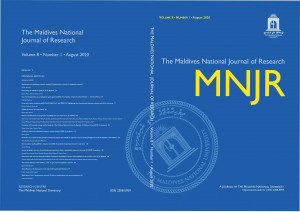Abstract
This paper explores Cummin’s dual iceberg metaphor in terms of bilingualproficiency in the Maldivian context and the gradual switch to English-mediuminstruction. Bilingual education was implemented in the Maldives on the premise that theearlier a student is introduced to a foreign language and the greater is her exposure, thebetter will be her proficiency in the foreign language. Research on bilingualism contradictsthis naïve and intuitive understanding of how a student achieves bilingual proficiency.The paper concludes by briefly outlining the manner in which the switch to the English-medium by policy actors was made and the consequent marginalization of mother tongue.and erosion of societal values.
References
Cummins, J. (1992). Language proficiency, bilingualism, and academic achievement. In P. Richard-Amato and M. A. Snow (Eds.), The Multicultural Classroom: Readings for Content-area Teachers (pp. 16–26). New York: Longman.
Cummins, J. (1994) The Acquisition of English as a Second Language, in Spangenberg-Urbschat, K. and Pritchard, R. (eds.) Reading Instruction for ESL Students. Delaware: International Reading Association.
Cummins, J. (2005). Teaching for cross-language transfer in dual language education: Possibilities and pitfalls. Alexandria: Teachers of English to Speakers of Other Languages, Inc. Retrieved from: http://www.tesol.org/docs/default-source/new-resource-library/symposium-on-dual-language-education-3.pdf?sfvrsn=0
Roessingh, H. & Kover, P. (2003). Variability of ESL learners’ acquisition of cognitive academic language proficiency: What can we learn from achievement measures? TESL Canada Journal, 21(1), 1–21.
